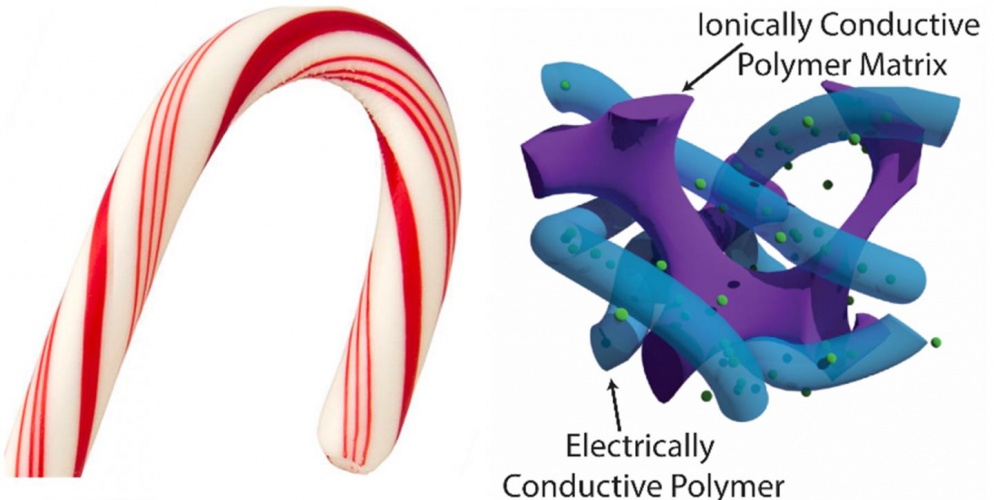‘Candy cane’ structure promises supercapacitor boost
Researchers at Queen Mary University of London (QMUL) and Cambridge University have developed a polymer electrode that could dramatically improve the performance of supercapacitors.

(Credit: Stoyan Smoukov)
According to the team, the electrode is capable of energy storage close to the theoretical limit, while also being flexible and durable over repeat cycles. These properties are a result of the polymer’s ‘candy cane’ structure, whereby the ionically conductive and electrically conductive strands are interwoven on a nanoscale level.
"Our supercapacitors can store a lot of charge very quickly, because the thin active material (the conductive polymer) is always in contact with a second polymer which contains ions, just like the red thin regions of a candy cane are always in close proximity to the white parts,” said project leader Stoyan Smoukov.
“But this is on a much smaller scale. This interpenetrating structure enables the material to bend more easily, as well as swell and shrink without cracking, leading to greater longevity. This one method is like killing not just two, but three birds with one stone."
Register now to continue reading
Thanks for visiting The Engineer. You’ve now reached your monthly limit of news stories. Register for free to unlock unlimited access to all of our news coverage, as well as premium content including opinion, in-depth features and special reports.
Benefits of registering
-
In-depth insights and coverage of key emerging trends
-
Unrestricted access to special reports throughout the year
-
Daily technology news delivered straight to your inbox










BEAS funding available to help businesses cut energy costs
And not a moment too soon, if the following exchange broadcast last Friday 13th June, on the Radio 4 ´Rare Earth´ program (link below, ~ 17 minutes...